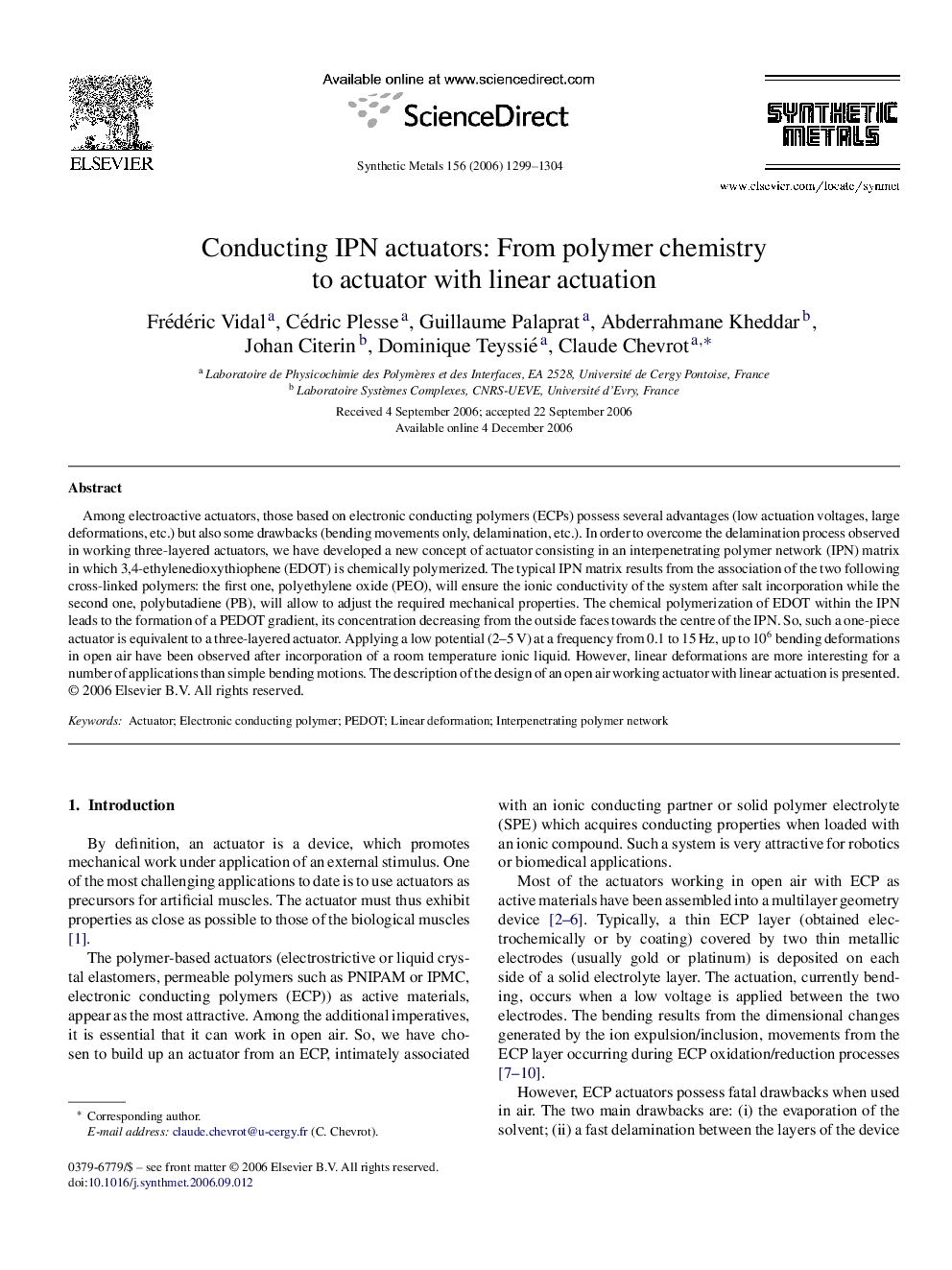| کد مقاله | کد نشریه | سال انتشار | مقاله انگلیسی | نسخه تمام متن |
|---|---|---|---|---|
| 1443659 | 1509474 | 2006 | 6 صفحه PDF | دانلود رایگان |

Among electroactive actuators, those based on electronic conducting polymers (ECPs) possess several advantages (low actuation voltages, large deformations, etc.) but also some drawbacks (bending movements only, delamination, etc.). In order to overcome the delamination process observed in working three-layered actuators, we have developed a new concept of actuator consisting in an interpenetrating polymer network (IPN) matrix in which 3,4-ethylenedioxythiophene (EDOT) is chemically polymerized. The typical IPN matrix results from the association of the two following cross-linked polymers: the first one, polyethylene oxide (PEO), will ensure the ionic conductivity of the system after salt incorporation while the second one, polybutadiene (PB), will allow to adjust the required mechanical properties. The chemical polymerization of EDOT within the IPN leads to the formation of a PEDOT gradient, its concentration decreasing from the outside faces towards the centre of the IPN. So, such a one-piece actuator is equivalent to a three-layered actuator. Applying a low potential (2–5 V) at a frequency from 0.1 to 15 Hz, up to 106 bending deformations in open air have been observed after incorporation of a room temperature ionic liquid. However, linear deformations are more interesting for a number of applications than simple bending motions. The description of the design of an open air working actuator with linear actuation is presented.
Journal: Synthetic Metals - Volume 156, Issues 21–24, 1 December 2006, Pages 1299–1304